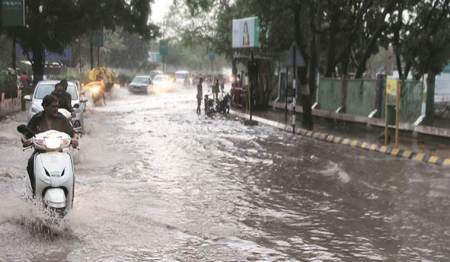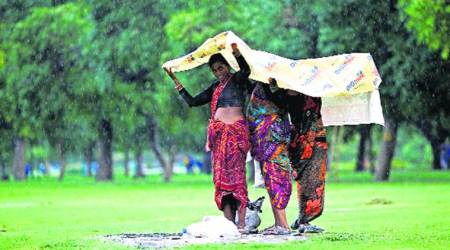 States, including Uttar Pradesh, Delhi, Madhya Pradesh, Assam and Kerala along with the northeast, were among the main regions where the total rainfall received during the time period was declining at a rate of 95 per cent. (Source: File Photo)
States, including Uttar Pradesh, Delhi, Madhya Pradesh, Assam and Kerala along with the northeast, were among the main regions where the total rainfall received during the time period was declining at a rate of 95 per cent. (Source: File Photo)
Cultivation along the Indo-Gangetic plains may face a threat as most of the 156 districts, covering approximately 25 per cent of the country, are showing a significant decreasing trend in the annual rainfall. The India Meteorological Department (IMD) recently released results of a century-long study, conducted using data collected from across 635 districts and 33 sub-divisions between 1901 and 2013. As per the study, during 1961-2013, the decreasing trend had caught up across eight per cent of the country.
States, including Uttar Pradesh, Delhi, Madhya Pradesh, Assam and Kerala along with the northeast, were among the main regions where the total rainfall received during the time period was declining at a rate of 95 per cent. According to the study, between 1901 and 2013, the annual rainfall for the country (mainland) ranged between 912 mm and 1,426 mm. What is even more worrying is that the rainfall during monsoon was also on the downside over larger areas of Uttar Pradesh and Kerala, where monsoon normally makes its onset early. While 27 out of the 72 districts in UP received less rainfall, 9 of 14 districts in Kerala witnessed a similar decline, revealed the study.
“While we cannot attribute this trend to a particular reason, this did help us learn that vast variations in temperatures — both globally and locally, rapid change in land use and increased urbanisation during the recent decades have been some of the major contributors,” Surinder Kaur, lead author of the study told The Indian Express.
Though the rise in rainfall has not been as significant it should be, with 82 districts panning over 13 per cent of the total area of the country being marginally wetter than their previous records. “The annual rainfall has shown significant positive trend over Konkan and Goa, costal belt of Andhra Pradesh, Odisha and Jammu Kashmir, particularly during 1961-2013,” said experts.
With an active Bay of Bengal for substantial period of the year, coastal states here are on the positive side, with increase in rains witnessing a significant rate of over 90 per cent in Odisha and Andhra Pradesh. Elaborating on this, another team member said, “It may be because of the intense storm activities that hit the east coast either along Tamil Nadu, Andhra Pradesh, Odisha and even West Bengal at times, that we see more penetration, thereby triggering intense rainfall events.” However, this penetration had little effect over neighbouring states of Bihar, Chhattisgarh or Jharkhand, indicating the weakening of synoptic systems as they move inland.







